CSCS Card Mock Test
Preparing for your CSCS Card Mock Test is crucial for anyone looking to work in the UK construction industry. The CSCS Card serves as proof that you possess the necessary skills and health and safety knowledge to perform your job safely and effectively. By taking a CSCS Card Mock Test, you can familiarize yourself with the types of questions you’ll face, ranging from site hazards to safety protocols. This practice not only boosts your confidence but also increases your chances of passing the actual exam on the first try. Numerous online resources and practice tests are available, offering a comprehensive overview of the test format and content. Start your preparation today to ensure you achieve the certification needed to advance your construction career.
Section A: Working Environment
General Responsibilities
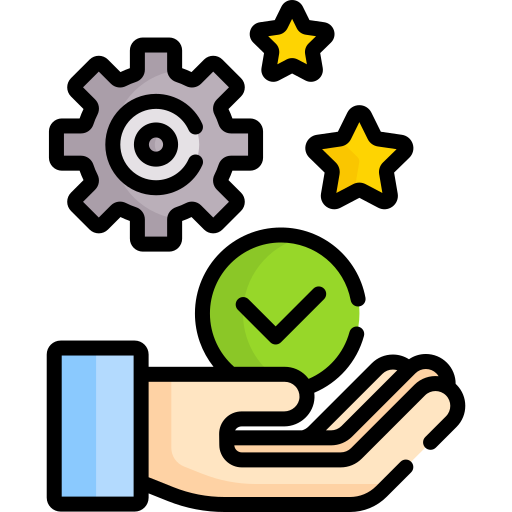
What you and your employer need to do ensure everyone is working safely on site.
Learning Content:
- The health and Safety at Work etc. Act 1974 contains legal duties for employers and employees.
- Visitors and workers must be given a site induction and authorised to enter site.
- Employers must provide information to workers about site rules, welfare facilities and emergency procedures.
- Workers should be provided with clean welfare facilities and information regarding hazards and risks at work.
- Everyone on site is responsible for the consideration of neighbours and members of the public.
- Employees should follow a safe system of work agreed with the employer.
- A safe system of work would include information such as the sequence of work, and any hazards associated with the task.
- The purpose of a risk assessment is to identify hazards and control risk.
- Risk assessments consider the likelihood of a hazard occurring and the seriousness of harm that could occur.
- A method statement will inform a worker of the safe way to carry out a task.
If a task feels dangerous or unsafe, stop work and report it immediately.
Accident Reporting and Recording

When, how and why accidents need to be reported and recorded.
Learning Content:
- Plant and machinery should only be used by authorised and competent operatives.
- Reporting unsafe conditions is everyone’s responsibility on site.
- Reporting near misses will help to prevent them happening again.
- Any accident causing injury must be recorded in an accident book.
- All relevant staff should be involved in investigating accidents and near misses.
First Aid and Emergency Procedures
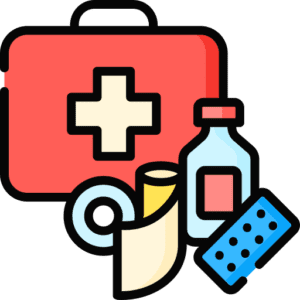
What you should do in case of an emergency, and what your employer must make available.
Learning Content:
- All first aiders should have a current, up to date first aid at work certificate.
- The place to go in the event of an emergency is called an assembly point.
- The location of the emergency assembly point should be identified in a site induction.
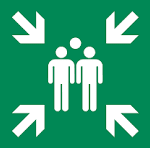
Evacuation Assembly Point
Personal Protective Equipment (PPE)

Why Personal Protective Equipment (PPE) is important, why you should wear it and who is responsible for it.
Learning Content:
- Employers should provide workers with Personal Protective Equipment (PPE) and the means to maintain it correctly, free of charge.
- Wearing PPE will help to protect workers from physical injury or ill health.
- Size and fit should be considered in the selection of suitable PPE.
- Stop work immediately and replace PPE if it gets damaged.
Environmental Awareness and Waste Control

Your responsibilities on site, how waste should be managed and how to conserve energy.
Learning Content:
- Everyone is responsible for minimising the amount of waste generated on site.
- Following the site environmental risk assessment will help to prevent pollution on a construction site.
- Segregating waste materials supports recycling and helps to avoid pollution.
- Reusing leftover materials helps to save energy and conserves raw materials.
- Recycling construction materials avoids waste going to landfill.
- Everyone on site should take responsibility for saving energy and water by turning off plant, equipment and taps when not in use.
- A good way of reducing energy if heating or cooling systems are being used in site accommodation is to keep windows and doors closed.
- Spill kits should be available to clean up spilt chemicals and oils.
- Bats and badgers are classed as protected species and are protected by law.
- Many historic buildings are listed and protected by law; permission is required before making any changes to them.
Section B: Occupational Health
Respiratory Hazards

How to work safely, protecting yourself and those around you from exposure to respiratory hazards. What health conditions may arise from exposure to dust and fumes.
Learning Content:
- Harmful dust is often invisible to the naked eye.
- Breathing in harmful dust can cause life shortening illnesses.
- Breathing in construction dust can result in occupational lung diseases, such as asthma and silicosis.
- Face-fit testing should be carried out as part of the initial selection of Respiratory Protective Equipment (RPE).
- A face-fit test will ensure that your RPE fits and functions properly.
- Wearing your RPE will help to prevent you from breathing in harmful dust and fumes.
- RPE will only be effective if it fits the wearer’s face properly.
- An on-tool extraction system is a method of dust control.
- Fumes will build up very quickly in a confined space.
- Carbon monoxide is a colourless, odourless, poisonous gas.
- Sparks or naked flames can easily ignite flammable vapours.
Noise and Vibration
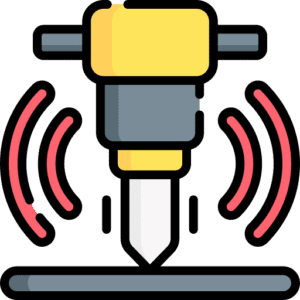
Why it is important to minimise exposure to noise and vibration in the workplace. How you should protect yourself and those around you.
Learning Content:
- If you have to raise your voice to be understood as a result of noise on site, stop work and raise the problem with your supervisor.
- Always wear the correct protection in a hearing protection zone.
- Exposure to vibration is a serious issue as it can result in disabling health conditions that cannot be cured.
- Hand-Arm Vibration Syndrome (HAVS) includes a range of conditions that can lead to permanent damage in the hands and forearms.
- Regular use of hand-held tools and equipment that vibrate is the main cause of hand-arm vibration syndrome.
- Your employer should explain safe methods of use and give you advice on exposure times for hand-held vibrating tools.
Health and Welfare
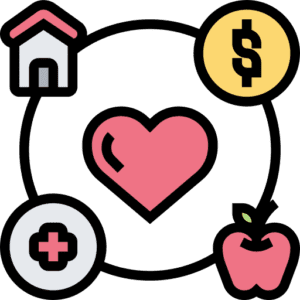
Common health issues on site and how to avoid them. Providing welfare facilities and support on site. Awareness of mental health.
Learning Content:
- If you are under the influence of alcohol, drugs or prescribed medication, it can make you feel drowsy, slow your reaction times, and affect your judgement. This will increase the risk of an accident at work.
- Long working hours or poorly designed shift work schedules can result in fatigue. If you are suffering from fatigue, you are more likely to have an accident at work.
- Fatigue can result in an increase in errors in the workplace.
- Stress is defined as the adverse reaction people have to excessive pressures or demand placed on them.
- Stress can affect anyone. A lack of concentration, anger and sleep problems are all warning signs.
- Stress at work can have a negative effect on your mental well-being.
- If you are concerned about a colleague’s mental health, speak to them about it.
- Talking and listening to people, without judgement, can help to overcome negative attitudes to mental health in the workplace.
- If you feel that you are having mental health issues, you should ask for help as early as possible.
- Talking about mental health issues is a good way of helping to manage them.
- Exposure to ultraviolet radiation from the sun. is one of the main causes of skin cancer in the construction industry.
- You are less likely to have an accident if your work area is clean and tidy.
- Adequate lighting and good housekeeping will reduce the risk of slips and trips.
- If the welfare facilities on site are not adequate or are dirty, report the issue to your supervisor.
- It is good practice to have access to a telephone and a means of raising the alarm if you are working alone.
Manual Handling

Why and how it is important to handle all loads using a safe system of work. What key areas you need to be aware of when handling loads.
Learning Content:
- Using a wheelbarrow or other lifting aids to move heavy loads is classed as manual handling but they help to reduce the risk of personal injury.
- Adopting safe manual handling techniques will help to protect your back and reduce the risk of injury in the workplace.
- Workers should be trained in safe lifting techniques before manual handling or lifting.
- The manual handling acronym T.I.L.E stands for Task, Individual, Load, Environment.
Section C: Safety
Safety Signs
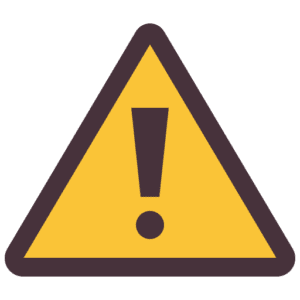
What types of safety sign you will see on a construction site, and what they are informing you of.
Learning Content:
- Prohibition signs – must not do – red and white
- Mandatory signs – must do – blue and white
- Warning signs – yellow and black
- Safe conditions – green and white
- Fire-fighting signs
- Globally harmonised pictograms are used to help identify hazardous substances.
Fire Prevention and Control

What you should do if you discover a fire, and which fire extinguishers should be used on what type of fire.
Learning Content:
- Emergency procedures should be in place before any work begins, explained in the site induction and not changed without notice.
- Everyone on site should be aware of the emergency procedures as this help to control dangerous situations.
- Emergency escape routes should be kept clear and unobstructed at all times.
- A fire assembly point is where people must go when the fire alarm sounds.
- Hot-work permits authorise tasks to be carried out safely, under strictly controlled conditions.
- Hot-work permits allow workers to carry out work that could start a fire, such as cutting steel with an angle grinder or soldering pipework in a central heating system.
- Liquefied Petroleum Gas (LPG) is colourless, has a distinctive smell and is highly flammable.
- A leaking LPG cylinder can catch fire at some distance from the original leak and flash back to the source.
- If a cylinder of LPG is leaking, turn the supply off immediately, if it is safe to do so.
- Fuel should always be dispensed using the correct nozzle and stored in the designated fuel store when not being used.
- Refueling should only be carried out by authorised people, when the equipment is turned off and cooled down for safety.
Electrical Safety and Tools

How to work safely with different types of tools, and what you should do if the tools you are using have not been examined or are faulty.
Learning Content:
- Workers must be trained and competent before operating power tools.
- Cartridge-operated tools operate like a gun and can be dangerous in inexperienced hands.
- The main function of guards on cutting and grinding machines is to stop fragments flying into the air and to prevent the operator coming into contact with the blade or wheel.
- The recommended maximum voltage for construction sites is 110 volts with a yellow connector.
- Residual Current Devices (RCDs) should be fitted between the plug of a 230 volts tool and the supply socket.
- RCDs work by cutting the power quickly if there is a fault and should be mechanical (trip) tested before each use.
Section D: High Risk Avtivities
Site Transport and Lifting Operations

How careful planning can safely segregate pedestrian and traffic routes, traffic rules you need to be aware of and how to lift loads safely.
Learning Content:
- People being struck by moving plant is one of the most common causes of injury and death on construction sites.
- You should be provided with information about site traffic rules in your site induction.
- Well organised sites will have segregated vehicle and pedestrian routes.
- Vehicle marshals should be used to control and ensure safe vehicle movements on site.
- You must be trained, competent and authorised to operate or signal plant on any site.
- Loading and storage areas on site should be located away from main pedestrian routes.
- Poor ground conditions, excessive speed, and poorly distributed loads will increase the risk of a vehicle overturning.
- One of the most common accidents involving dumpers is overturning.
Working at Height

What types of equipment you will use for working at height, and how to use them correctly.
Learning Content:
- Work at height is defined as work at any height where a person could fall and be injured.
- Every year falls from height kill more construction workers than any other type of accident.
- Work at height should be avoided where possible.
- All equipment for working at height should be inspected before use.
- If you are involved in work at height, your employer should ensure that you have sufficient information, instruction and equipment so that you can work safely.
- There should always be a rescue plan if people are working at height.
- If you feel that the task you are completing at height is unsafe, stop work and report it to your supervisor.
- It would be classed as working at height if you were standing on the back of a lorry during loading or unloading activities.
- One of the leading causes of injury on construction sites is as a result of workers being struck by falling objects.
- Do not attempt to erect, alter or dismantle a mobile access tower unless you have been trained and authorised to do so.
- Make sure that there are no people, tools or equipment on a mobile access tower before you attempt to move it.
- The erection, alteration, inspection and dismantling of scaffolding should only be carried out by trained and authorised persons.
- Person fall-arrest equipment is designed to minimise the consequences if a fall occurs and will only protect an individual worker.
- All roofs should be treated as fragile until a competent person has confirmed they are not.
- Safe access and a safe working platform should be provided for all work on fragile roofs.
Excavations and Confined Spaces
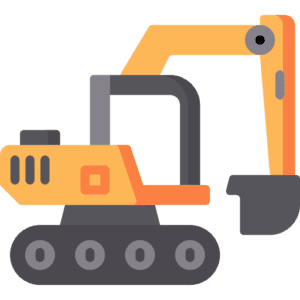
How to work safely in a confined space or excavation, and what you should do if exposed to certain hazards.
Learning Content:
- Excavations should always have a safe means of access and egress, such as a secured ladder.
- Excavations should be inspected at the start of every shift, or after events that might affect stability.
- The most accurate way to identify the location of buried services is through the use of trial holes.
- If you damage an underground service, stop work, do not touch anything and report it.
- Permit systems are often used where people are working in confined spaces.
- There should always be a rescue plan if you are working in a confined space.
- If you are working in a confined space and the gas alarm sounds, get out immediately.
Hazardous Substances

How you can identify a hazardous substance, and what control measures should be in place to enable you to work safely.
Learning Content:
- Asbestos Containing Materials (ACMs) can be difficult to identify. Asbestos is made up of hazardous, microscopic fibres which can easily be inhaled.
- If you think a material contains asbestos, always assume it does. Stop work, warn others, and report it to your supervisor.
- Your employer should ensure that exposure to hazardous substances is prevented or adequately controlled.
- Health and safety information for hazardous substances should be detailed in a COSHH assessment.
- Control measures for working with hazardous substances should be monitored regularly.
- Wet cement and concrete can cause skin burns and dermatitis if they are in direct contact with your skin.
- Lead is toxic. The most common route of entry into the body is via the mouth (ingestion).
Tags
CSCS Mock Online Test
CSCS Mock Test Practice
CSCS Card Mock Exam
CSCS Card Mock Test
CSCS Mock Test Questions
CSCS Card Mock Exam
Following can be used for CSCS Card Mock Exam, CSCS Card Mock Test, CSCS Mock Test Online, CSCS Mock Test Practice, CSCS Mock Test Questions, CSCS Test Mock Test, CSCS Test Practice Test.










